Zitting Cisticola, Graszanger, Cistensänger, Fuinha-dos-juncos, Buitrón Común
Spotted at our property Monte Horizonte in the Alentejo region of Portugal. Zitting Cisticola sound
The Zitting Cisticola or Streaked Fantail Warbler (Cisticola juncidis), is widely distributed Old World warbler whose breeding range includes southern Europe, Africa outside the deserts and rainforest, and southern Asia down to northern Australia.
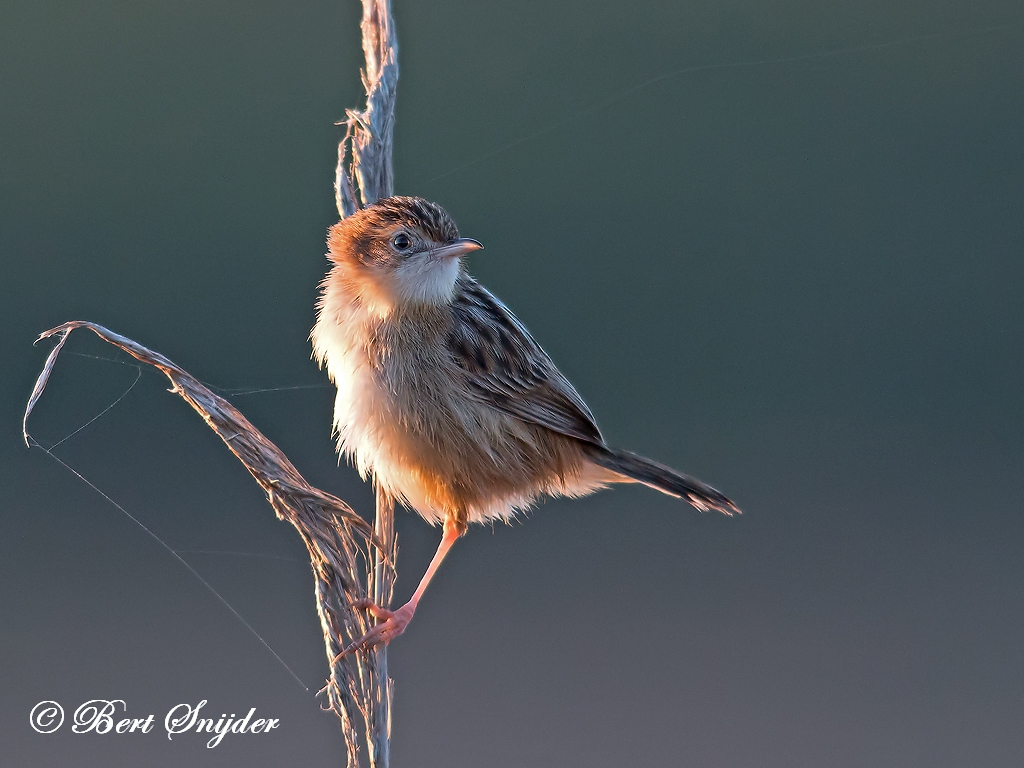
More photos at the bottom of this page.
A small bird found mainly in grasslands, it is best identified by its rufous rump, lacks any gold on the collar and the brownish tail is tipped with white. During the breeding season, males have a zigzagging flight display accompanied by regular “zitting” calls that has been likened to repeated snips of a scissor. They build their pouch nest suspended within a clump of grass.
The Zitting Cisticola is brown above, heavily streaked with black markings. The underparts are whitish, and the tail is broad, white-tipped and flicked frequently, giving rise to the alternative name for the species. The adult males have less crown streaking and more back marking than the females, but there are no great difference between the sexes or the eighteen geographical races. The absence of a nuchal collar separate it from Cisticola exilis. In the non-breeding season, they tend to skulk within the grass and can be hard to spot.
Across their wide distribution range, several variations in populations have been noted and as many as 18 subspecies are recognized. They differ slightly in calls, plumage and size and some have been considered full species in some taxonomic treatments. The nominate form is found in southern France, Greece, Turkey, Sicily, Corsica and Egypt while western Portugal and Spain have cisticola.
The population in Israel, Syria, Iraq and Iran is neuroticus while the northern and eastern African population is uropygialis and perennius (further south). Gabon, Angola, southern Africa are home to terrestris. The population in the Western Ghats of India, salimalii does not show seasonal tail length variation as in cursitans of the plains of India and dry-zone of Sri Lanak which has a longer tail in the non-breeding season. Population malaya is found in southern Southeast Asia, tinnabulans further north in southern China while brunniceps is found in Korea and Japan. Other populations include nigrostriatus (Philippines), constans (Sulawesi), fuscicapilla (east Java), leanyeri (northern Australia), normani (northwest Queensland) and laveryi (northeast Australia).
This genus is sometimes split off with various other southern warbler genera and given family status as the Cisticolidae. This species was previously known as Fan-tailed Warbler , but the current name gives consistency with the many tropical cisticola species, and avoid confusion with an American species also named Fan-tailed Warbler.
This species is found mainly in grassland habitats, often near water. Most populations are resident, but some East Asian populations migrate south to warmer areas in winter. In the Himalayas, they ascent to about 1,900 metres (6,200 ft) during summer but are below 1,300 metres (4,300 ft) in the winter. This species is a rare vagrant to northern Europe, mostly as a spring overshoot. Its European range is generally expanding, although northern populations are especially susceptible to hard winters.
Zitting Cisticolas are very small insectivorous birds, sometimes found in small groups. The breeding season is associated with the rains. Two broods a year occur in many regions. Males are polygynous but some are monogamous the male builds the initial nest structure deep in the grasses, and invites females using a special display. Females that accept the male complete the nest. The nest is made by binding living leaves into the soft fabric of felted plant-down, cobwebs, and grass.
The Zitting Cisticola’s nest is a cup shape with a canopy of tied-together leaves or grasses overhead for camouflage; 3-6 eggs are laid. The female incubates the egg. The eggs hatch after about 10 days. More than one brood may be raised. Females change their mates frequently and rarely stay within the same territory, while males are less mobile. Females can sometimes breed in their first year.
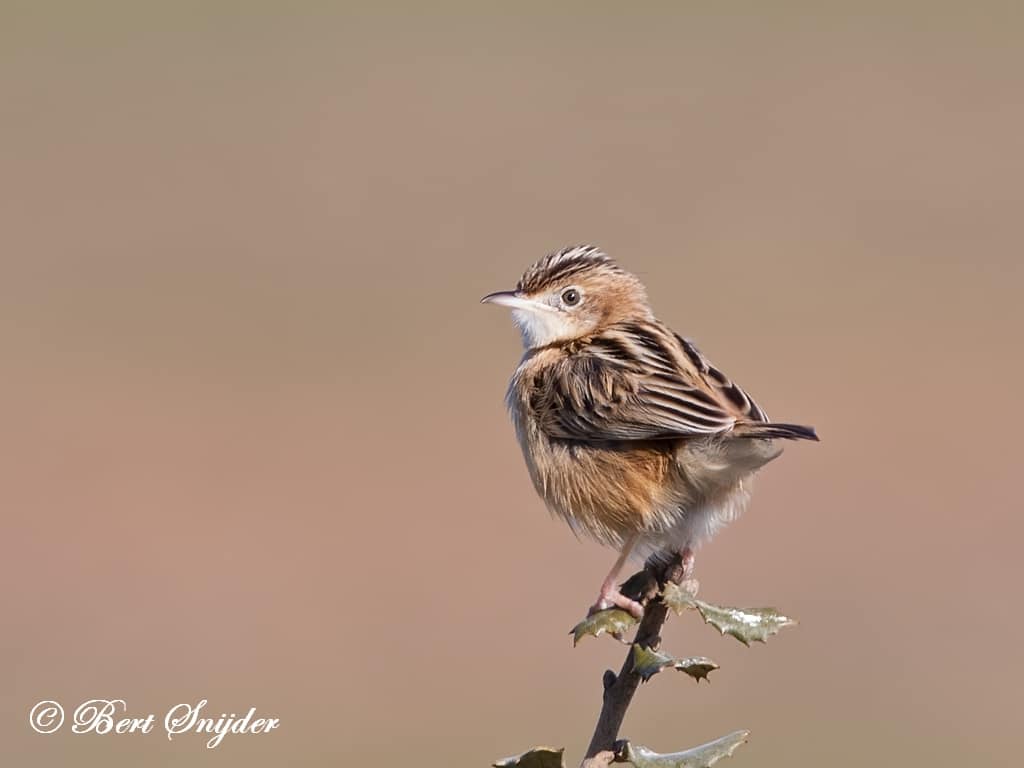
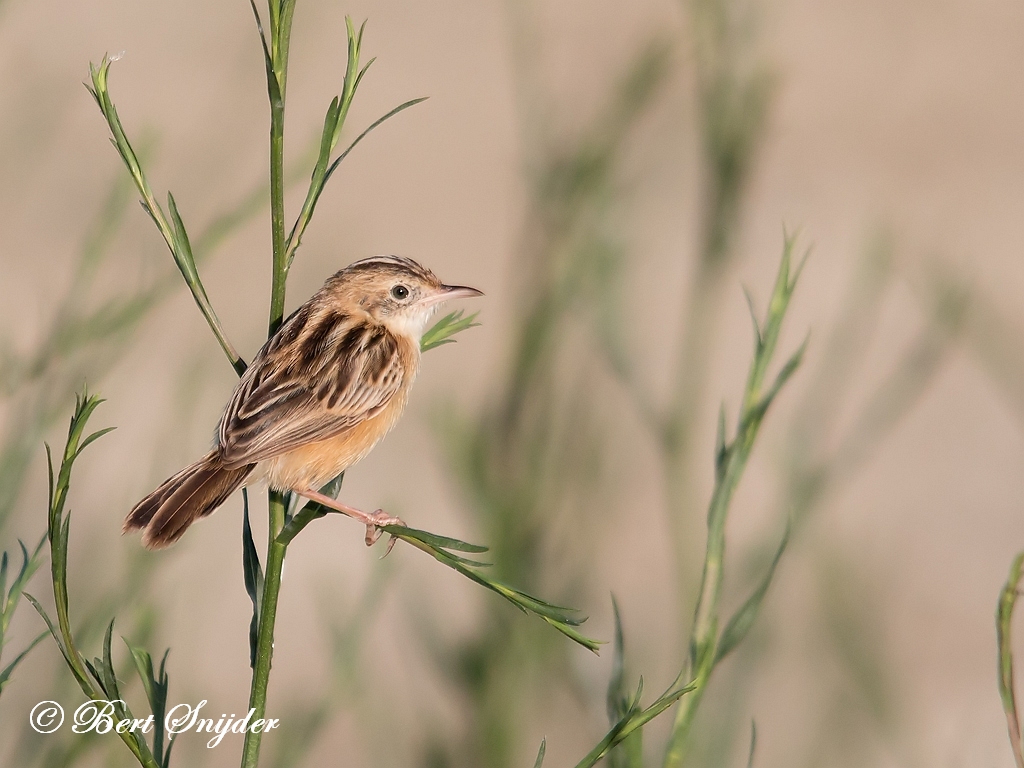



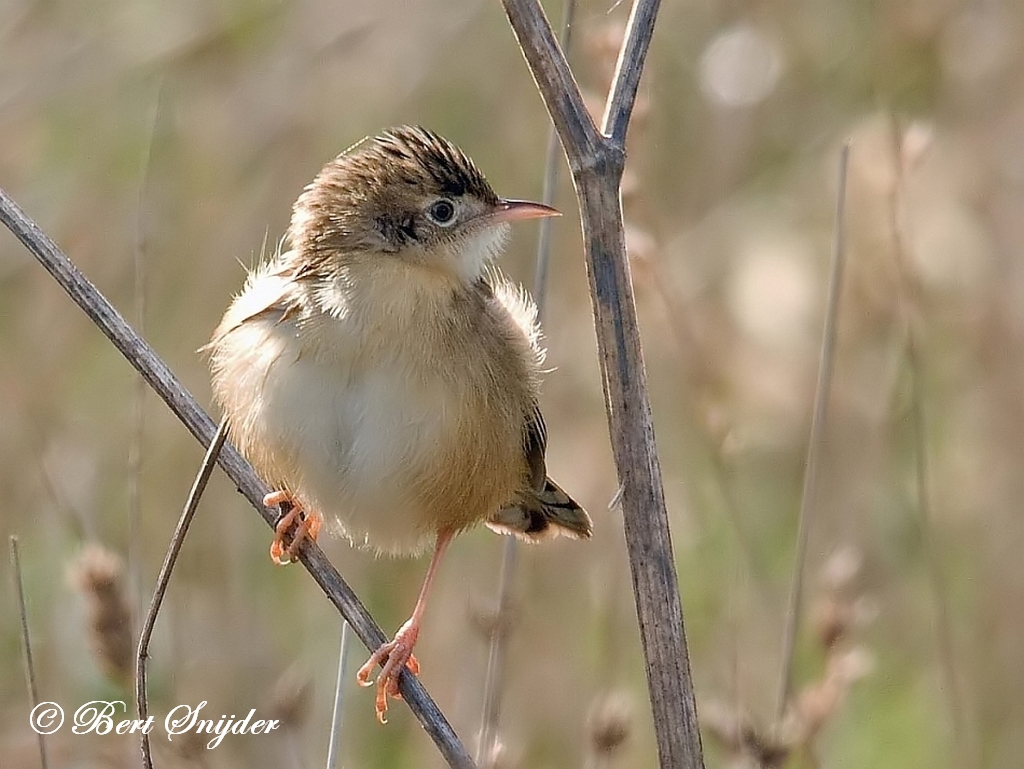
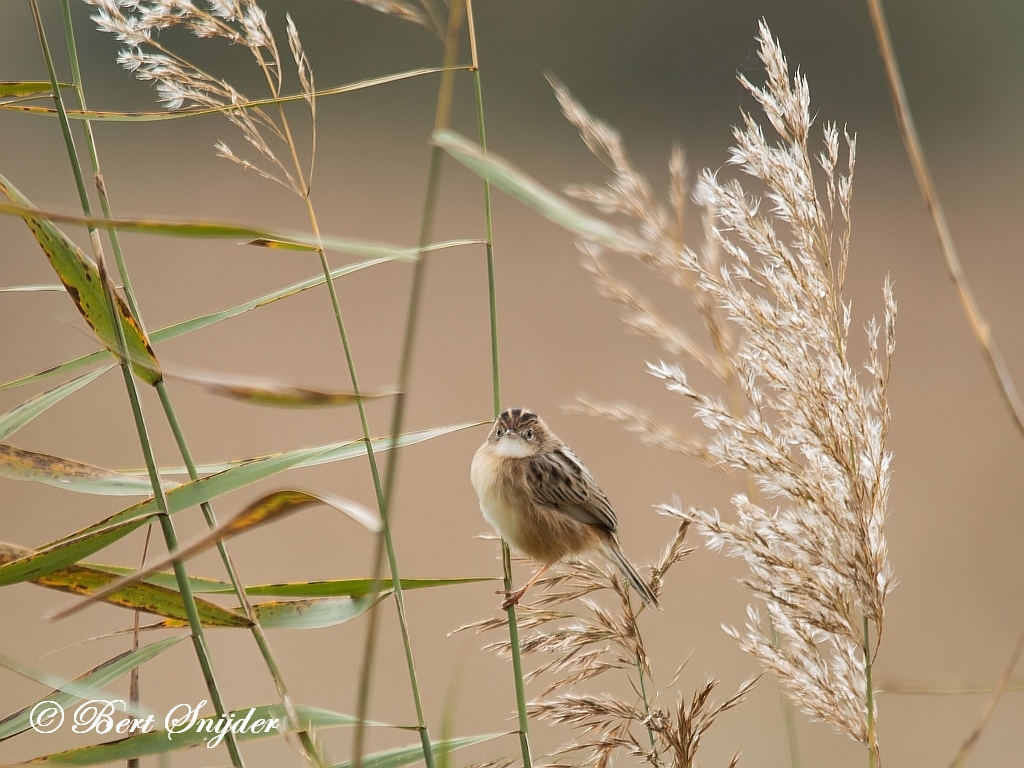
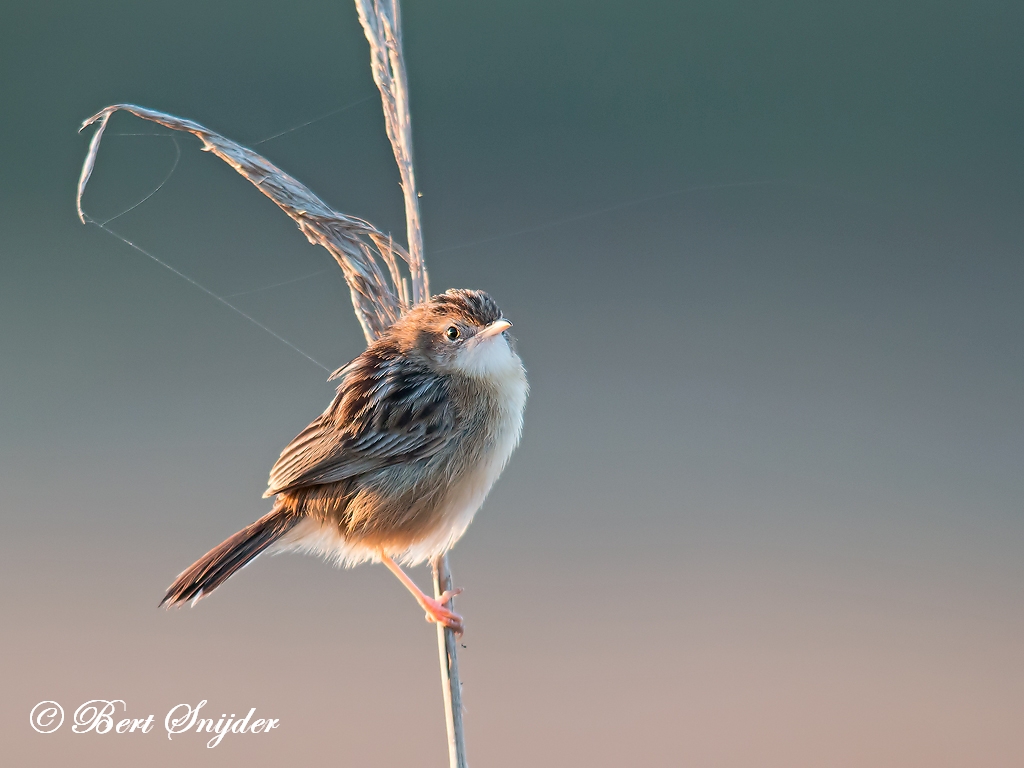

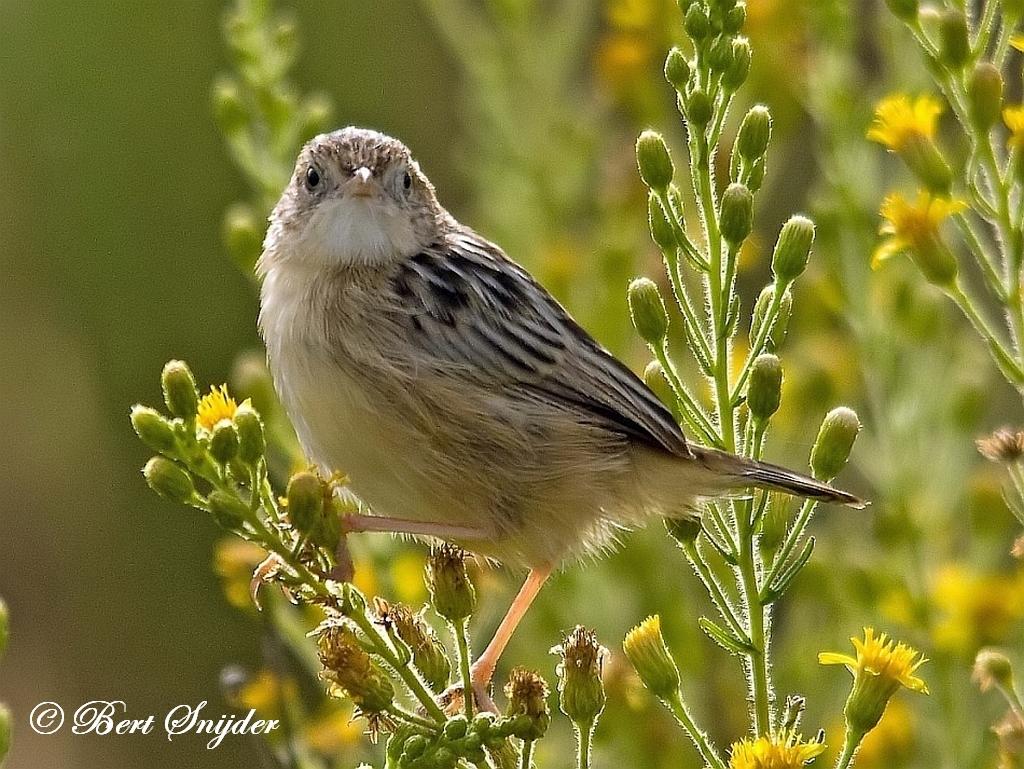
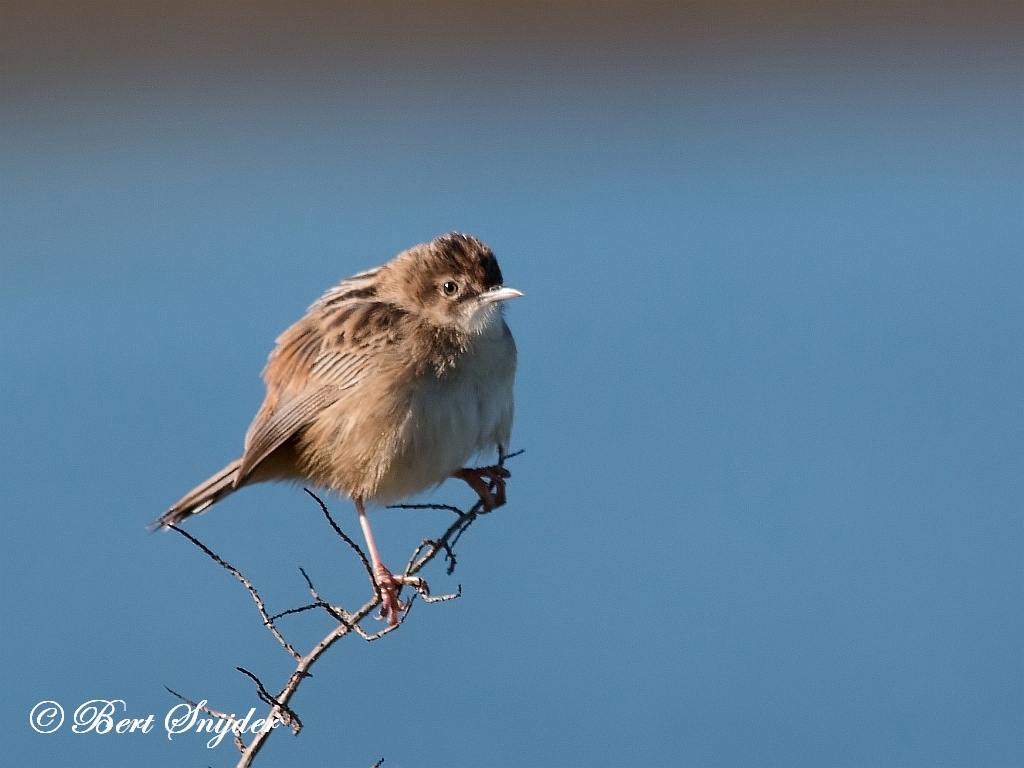

Other synonyms:
Afrikaans: Landeryklopkloppie
Asturian: Saltón
Catalan: Butxaqueta, Trist
Catalan (Balears): Butxaqueta
Cebuano: tiktikrobong
Czech: Cistovník rákosníkový
Danish: Cistussanger
German: Cistensaenger, Cistensänger, Zistensänger
English: Common Cisticola, Common Fantail Warbler, Common Fantail-Warbler, Fantail Warbler, Fantailed Cisticola, Fan-tailed Cisticola, Fan-tailed wabler, Fantailed Warbler, Fan-tailed Warbler, Streaked Cisticola, Streaked Fan-tailed Warbler, Streaked Fantail-Warbler, Streak-headed Cisticola, Streak-headed Fantail-Warbler, Wren Grass-Warbler, Zitting Cisticola
Spanish: Buitron, Buitrón, Buitrón Común, Buitrón Ibérico, Cistícola Buitrón
Estonian: rohulind
Basque: Ihi-txoria, Trist
Finnish: Heinäkerttu
French: Cisticole commune, Cisticole des joncs, Cisticole d’Europe
Irish: Ceolaire Earrfheanach
Galician: Carriza dos xuncos, Trist
Croatian: Šivalica
Hungarian: Szuharbújó
Indonesian: Cici padi, Pikoré, Pipi-pipi kolé
Icelandic: Hálmsöngvari
Italian: Beccamoschino, Beccamoschino comune
Japanese: sekka
Latin: Cisticola juncidis, Cisticola juncidus
Mamasa: tíku
Malay: Burung Main Angin
Dutch: Gewone Graszanger, Graszanger, Waaierstaartrietzanger
Norwegian: Cistussanger
Sotho, Northern: Tangtang
Polish: chwastówka, chwastówka (zwyczajna), chwastówka zwyczajna
Portuguese: fuinha dos juncos, Fuinha-dos-juncos
Romansh: Channarel da la cua lada
Slovak: cistovník ryšavý, cistovníkovec ryšavý
Slovenian: brškinka
Shona: Kadhi-idhi-i
Albanian: Sqepholli xunktheve
Serbian: Širokorepi cvrcic
Sotho, Southern: Motintinyane
Swedish: Grässångare
Swahili: Kidenenda Zezete
Turkish: Yelpaze Kuyruk, Yelpazekuyruk
Tsonga: Matinti
Xhosa: Unonzwi
Travel Birdwatching Holiday Alentejo, Vacation Portugal for birders to see birds on your trip. Guided Birdwatching Tours & Trips